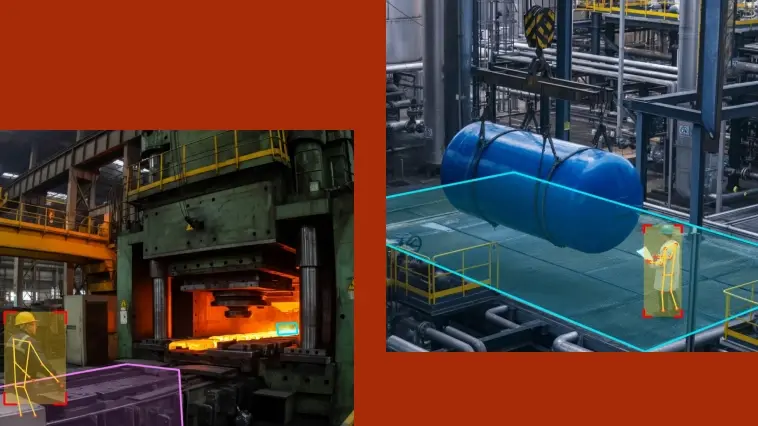In high-risk environments, the most dangerous exposures are often the ones we don’t see until it’s too late.
A forklift reverses into a blind spot, a rigger steps under a suspended load, and a maintenance tech reaches into moving equipment. These are classic line-of-fire scenarios: sudden, severe, and often fatal. And they don’t always happen because someone ignored protocol. Sometimes they happen because no one had eyes on the exposure at the moment it mattered.
We can’t afford to keep investigating these incidents after the fact. It’s time to start preventing them in real time.
Line-of-Fire: One of the Most Common, and Most Under-Detected SIF Precursors
Line-of-fire events—commonly categorized as “contact with objects and equipment”—are a major cause of serious injuries across high-hazard sectors like construction, manufacturing, and logistics.
According to the Bureau of Labor Statistics, contact with objects or equipment accounted for over 700 fatalities in 2023, ranking just behind transportation incidents and falls. These injuries typically result from being struck by or caught between machinery, vehicles, tools, or materials on the job.
A 2023 NIOSH-backed report further reinforces the risk: in construction alone, struck-by injuries caused 150 deaths and 14,000 nonfatal injuries in 2020, most involving vehicles, heavy equipment, or falling objects.
Despite their frequency, line-of-fire exposures often go unnoticed in the moment. They unfold in seconds—outside of scheduled audits or walkthroughs—and by the time they’re logged, the exposure has already occurred.
What Real-Time Exposure Actually Looks Like
Line-of-fire exposure isn’t limited to dramatic events. It includes everyday moments that put workers in harm’s way:
• A pedestrian walks within 3 feet of a reversing forklift
• A mechanic kneels under a suspended load without blocking
• An operator bypasses guarding to clear a jam
• A technician reaches into energized equipment during maintenance
These aren’t near misses. They’re unseen risks.
Seeing Exposure as It Happens: How Intenseye Helps
Intenseye uses AI-powered computer vision to detect line-of-fire exposure across dynamic environments. The platform identifies:
• Unsafe proximity between people and mobile equipment
• Unauthorized entry into danger zones
• Absence of machine guards or blocked escape paths
• Repetitive exposure trends across shifts, lines, or locations
And it does this 24/7, without relying on someone to be watching in real time. When risk is detected, alerts are triggered immediately, giving safety teams the power to intervene before harm occurs.
In facilities where Intenseye has been deployed, we’ve seen:
• 40%+ reduction in serious exposure events within months
• A measurable drop in high-risk pedestrian-equipment interactions
• Faster root cause resolution, because the data is timestamped, visual, and contextual
This is Safety-II in action: a proactive, exposure-based model that gives safety teams the insight and speed they need to prevent SIFs, not just respond to them.
Turning Risk Patterns into Leading Indicators
When line-of-fire events are visible, measurable, and trendable, they stop being surprises and start becoming signals for timely intervention.
With Intenseye, safety leaders can:
• Monitor risk patterns by shift, location, or job type
• Pinpoint high-risk equipment configurations or layouts
• Coach teams in the moment using objective, visual data
• Benchmark and reduce unsafe interactions as a leading indicator—not just react to incidents
You don’t need to wait for a near miss to justify action. The data is already there.
In fact, we’ve written why near misses alone aren’t enough when it comes to preventing SIFs. What matters is identifying the precursors—and acting before they escalate.
See It Before It Happens
Line-of-fire incidents can’t be prevented with good intentions alone.
They require visibility. Speed. Context. And consistency.
Intenseye helps safety teams act when it counts—not after the damage is done.
👉 Discover how AI-powered detection can reduce your line-of-fire exposure. Contact us to learn more.


.webp)

.webp)